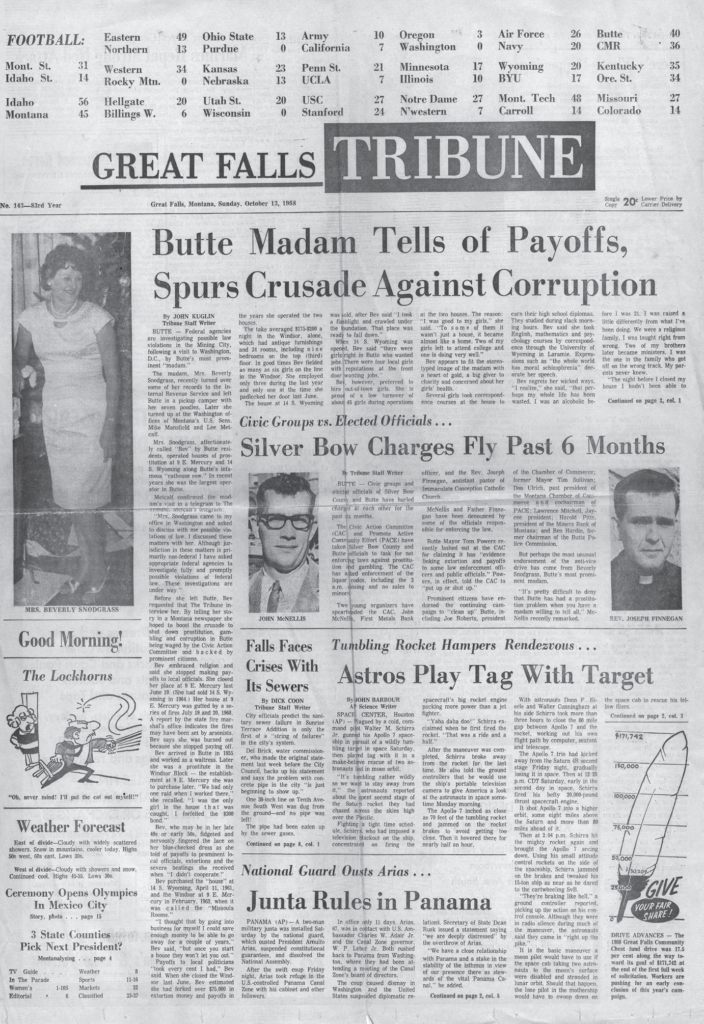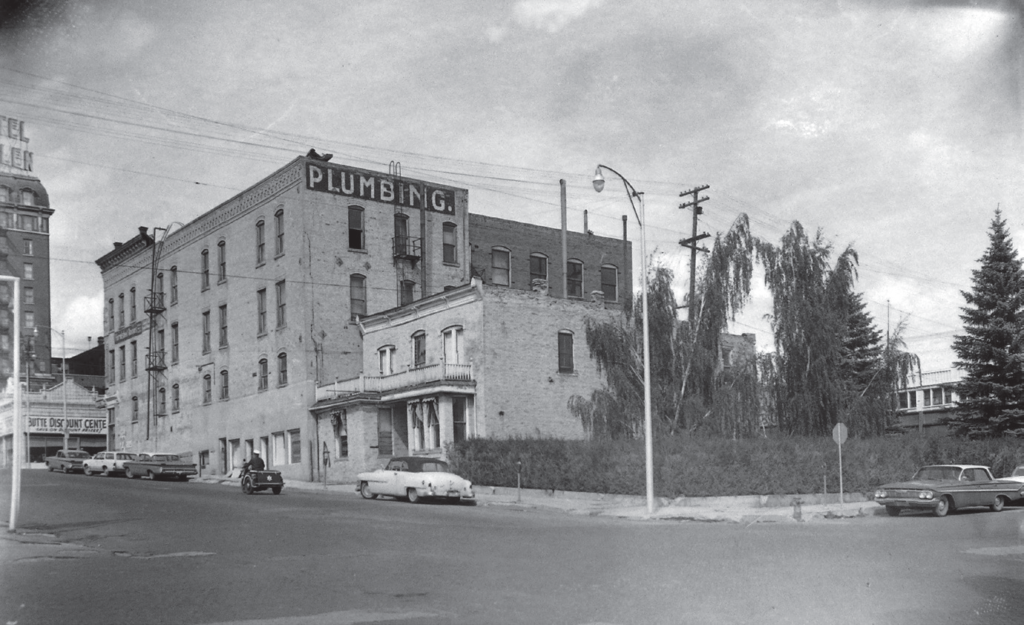
And what on earth is a curbie?
Brothels, bribes, and bagmen—throughout the 1960s, Butte, Montana, had it all. A mining city that in some ways was more suited to the Old West than to the Atomic Age, Butte became known as the ‘Richest Hill on Earth’ for the rich veins of minerals underneath it. Where comes heavy industry, though, comes the need for relief from grueling workdays and dangerous conditions. Such relief, as author and longtime journalist John Kuglin discovered, found some creative maneuverings around the law.
Or, in some cases, flat-out rejections of it.
In his book Montana’s Dimple Knees Sex Scandal: 1960s Prostitution, Payoffs & Politicians, Kuglin dug up some remarkable figures from his years of reporting on the issue (Kuglin, famously, broke the story of Beverly Snodgrass, the Butte bordello madam who finally ‘told all’). The full story in all its lurid detail is found within his pages, but we at Crime Capsule found these factoids to pull out first. Without any further ado:
7,000 feet—the length of the Berkeley mining pit, now called Lake Berkeley after being abandoned by Anaconda, who owned the pit, in 1982. Over a mile wide, Lake Berkeley is 1780 feet deep, is deadly toxic, and is still a major tourist attraction in the region.
168—the number of lives lost in the granite Mountain and Speculator Mines fire in 1917, the nation’s worst hard-rock mining disaster to date. According to Kuglin, following the fires about 14,500 miners went on strike against Anaconda for safer working conditions.

$16,583—the amount Beverly Snodgrass paid in the early 1960s for her first house of prostitution at 14 South Wyoming, which would become “regularly mentioned in Butte newspaper columns for murders, stabbings, thefts, assaults, prostitution, robberies, and white slavery.” Oh, and it would also be dynamited in 1964 as an intimidation tactic.
$75,000—the amount Snodgrass estimated she had paid in extortion, bribes, and kickback money to local police and politicians to stay in business, from the moment she bought the property until 1967, when she agreed to spill the beans.

$5—the average ‘tip’ a policeman could expect to receive for coming by the brothel and handling any ‘disagreements’ among the clientele during Snodgrass’ tenure as a madam.
$20 million—the average yearly amount of the illegal gambling industry in nearby Missoula County in the 1960s, primarily sourced from card games and coin-operated machines. According to reporters of the time, gambling flourished openly despite tough laws against it.
$0.05—the cost of playing a ‘punchboard,’ an illegal gambling game common in saloons and public houses of the time. Paying a nickel would enable the player to punch out a section of a perforated board, in the hopes of revealing a winning number and a prize payout from the venue. One such board, the ‘Lucky Sawbuck,’ featured 1500 punches, for a maximum possible payout of $43.75.
111—the total number of bars in Butte in 1968, whose population at the time was 27,877. According to Kuglin, that meant that Butte had one bar for every 251 residents—far and away the highest per-capita ratio in the state (the next closest competitor, Billings, had one bar for every 695 residents).
$250,000—the amount one source suggested to Kuglin of the total annual payoff to local officials from gambling, prostitution, and liquor law violations in the 1960s.
And what, you may wonder, is a curbie? According to Kuglin, a curbie was “a very informal Butte party that usually began after your favorite bar closed. You sat on the curb, planted your feet in the gutter and passed around a bottle—the local version of mouth-to-mouth resuscitation.” In other words—cheers!




